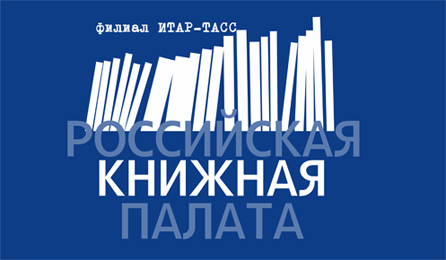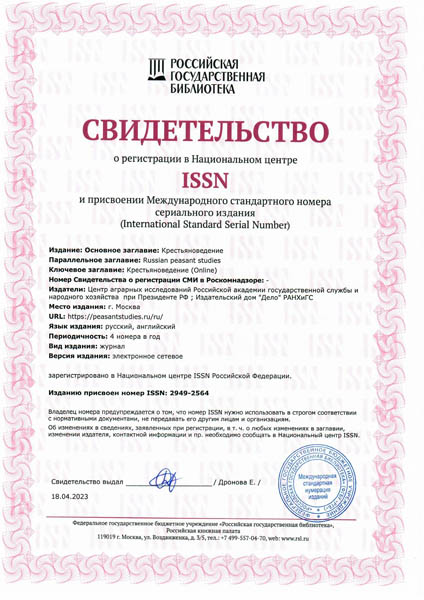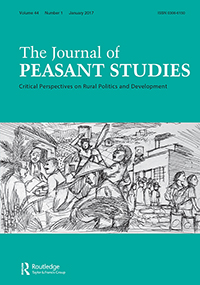Andreenkov S. N. Virgin Project of 1954 in Kazakhstan and Siberia: Dynamics of grain production // The Russian Peasant Studies. 2022. V.7. №3. P. 89-105.
DOI: 10.22394/2500-1809-2022-7-3-89-105
Annotation
The article aims at identifying features of grain production in Siberia and Kazakhstan during the campaign for developing virgin and fallow lands (second half of the 1950s) and subsequent decades of the Soviet and post-Soviet era; such features determined the results and consequences of the Virgin Project in 1954. The author identifies objective and subjective factors affecting the adoption and realization of the virgin land program; considers general and particular practices of plowing new lands; describes the dynamics of sown areas for crops, grain productivity and gross production, its qualitative characteristics in Siberia and Kazakhstan. The author argues that the campaign for developing virgin and fallow lands was a means of N. S. Khrushchev’s struggle for power, which explains its excessively large scale and relatively long duration. The author shows that the virgin land campaign is more significant for the history of Kazakhstan than for the history of Siberia. Due to the new land development in Kazakhstan, the sown areas of crops, primarily wheat, significantly increased; the network of large agricultural enterprises expanded; the infrastructure of agricultural production started to develop. In 1991, these production capacities became the foundations of the contemporary economy of independent Kazakhstan. In Siberia, the sown area of crops has decreased since the mid-1960s, but the gross grain harvest has grown, which indicates opportunities for intensive farming, and such opportunities are gradually realized.
Keywords
Virgin Project, campaign for developing virgin and fallow lands, grain production, acreage, yield, grain farms, agriculture, Kazakhstan, Siberia.
About the author
Andreenkov Sergey N., PhD (History), Senior Researcher, Sector of Agrarian History, Institute of History, Siberian Branch of the Russian Academy of Sciences; Akademika Nikolaeva St., 8, Novosibirsk, 630090, Russia.
E-mail: This email address is being protected from spambots. You need JavaScript enabled to view it.
Andreenkov S.N. Reforms in the economies’ system and land use in the Novosibirsk Region in the 1990s // The Russian Peasant Studies. 2019. V.4. №4. P. 58-75.
DOI: 10.22394/2500-1809-2019-4-4-58-75
Annotation
The article considers the features of reorganization of agricultural enterprises and land use system in the Novosibirsk Region in the 1990s. This reform was the main direction of the agrarian transformations in the 1990s. The author identifies the logic and consequences of the collective and state farms transformation into various forms of commercial enterprises (joint-stock companies, cooperatives, peasant farms and their associations) and features of the land redistribution. At the first stage of the reform (1991), the collective and state farm system of the Novosibirsk Region did not change, new forms of farms and land use just started to develop, and the size of subsidiary plots significantly increased. At the second stage of the reform (1992–1993), the reorganization of collective and state farms accelerated, a network of large commercial enterprises developed, and the number of peasant farms increased. However, the new organizational-economic system met the market economy standards only formally. The new agricultural jointstock companies and cooperatives did not differ much from their predecessors—collective and state farms. Large farms remained the main supplier of agricultural products on the market although they worked in extremely unfavorable conditions. Nevertheless, the role of small economies represented by peasant farms also increased.
Keywords
land reform, collective farms, state farms, agriculture, land use, Novosibirsk Region
About the author
Andreenkov Sergey N., PhD (History), Senior Researcher, Sector of Agrarian History, Institute of History, Siberian Branch of the Russian Academy of Sciences. 630090, Novosibirsk, Akademika Nikolaeva St., 8.
E-mail: This email address is being protected from spambots. You need JavaScript enabled to view it.





















